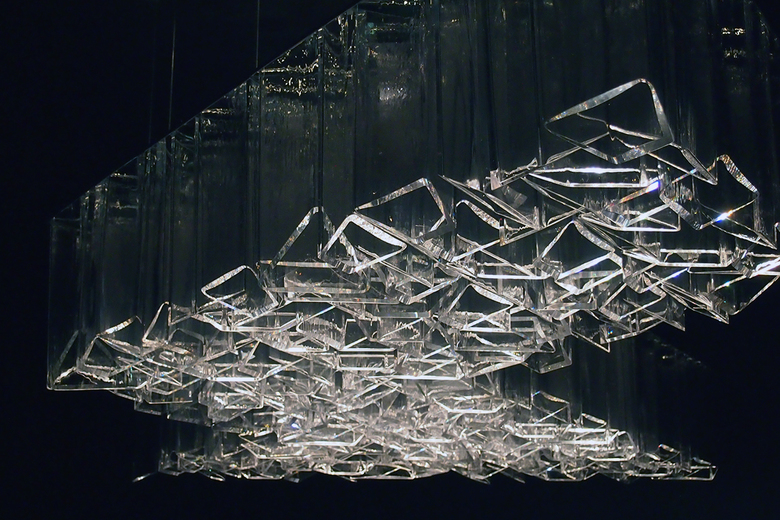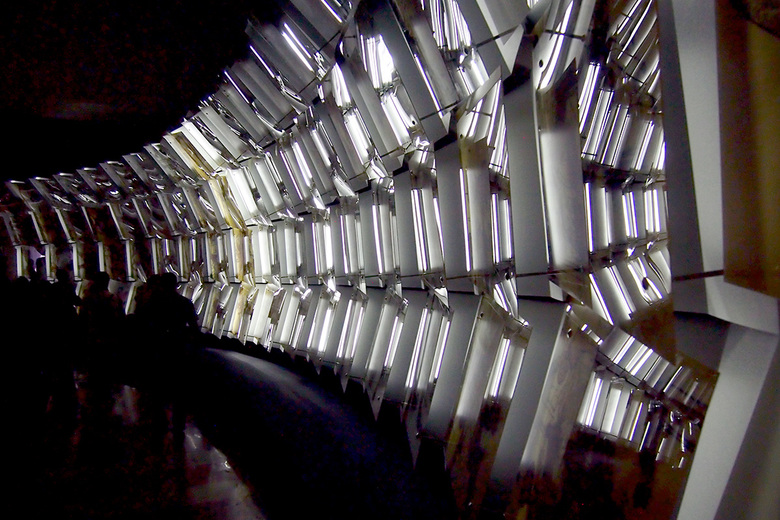Sonnets in Babylon / Ice Chandelier
John Hill
6. June 2014
Ice Chandelier. Photo: John Hill/World-Architects
Daniel Libeskind's project for the Venice Pavilion is comprised of three elements: 100 of the architect's never-before-seen drawings mounted on glass panels, a chandelier made from hand-blown glass, and a sculptural "X" in front of the pavilion.
Sonnets of Babylon installation. Photo: John Hill/World-Architects
The 100 drawings mounted on glass comprise the main portion of the exhibit, found in the pavilion's curving gallery. From the entrance the drawings – made from hand with pen and sepia-toned wash mixed with coffee grounds – appear scalelike, though the ever-changing lighting behind the glass and the ambient music throughout give the installation a dynamic quality. From the other end of the curved gallery (photo below) the drawings and the reflective panels behind them appear prismatic, confusing as to which surface is which. Libeskind's drawings are meant to depict a "favela of the mind" or "metaphoric city of the future." Like his Golden Lion Prize-winning drawing from the 1985 Biennale, the Sonnets of Babylon is visually rich if esoteric; one need not understand his motives to appreciate the imagery.
Both the Ice Chandelier and Sonnets of Babylon were made with the help of Lasvit and master craftsmen. The former involved the creation of clear glass "cells" blown into angular molds and then arranged into the resulting pattern. The latter includes a special piece made from hand-painted glass set into lead frames, the same technique as the stained glass windows from centuries ago.
Sonnets of Babylon installation. Photo: John Hill/World-Architects
Sonnets of Babylon sculpture. Photo: John Hill/World-Architects
The exterior sculpture that goes by the same name as the interior installation is meant to serve as a starting point, "a virtual beginning of a line that runs through the Sonnets and anchors their exploding and collapsing worlds," per a statement. The angled top of the sculpture gives the sculpture a shifting quality that belies the static nature of grids. From certain vantage points (photo below) the sculpture appears Catholic, religious – fitting for the pavilion of the city of Venice.
The sculpture is made with Dekton, an ultra-compact surface by Cosentino. The panels – only 12mm thick – are rendered in Keranium, a color meant to give the piece an industrial aesthetic.




